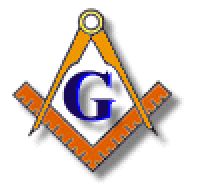|
freemasonry encourages
The official history of freemasonry began in 1717 when four London lodges formed the Grand Lodge of England. They met for an annual feast and elected a Grand Master, it was simply an opportunity for members of lodges in London to meet socially. During the seventeenth century, accepted masons met in a private house or a room in a tavern or coffee house for the purpose of making free masons. They called themselves free or accepted masons because they used masons tools to explain ethical conduct. Elias Ashmole, the Antiquary and founder of the Ashmolean Museum at Oxford wrote in his diary for 4 October 1646: "I was made a Free Mason at Warrington in Lancashire". He attended a meeting in 1682 for the purpose of admitting six men to the "Fellowship of Free Masons". Nine fellows assembled about noon after which "We all dined at the Half Moone Tavern in Cheapside at a noble dinner prepared at the the charge of the new accepted Masons." The new Grand Lodge system established at the Goose and Gridiron Alehouse in 1717 consisted of one admission ceremony. Within five years, the system was reorganised to three degrees: Entered Apprentice, Fellow Craft and Master Mason. These ceremonies explained our natural equality and dependence on each other, the importance of education and the value of cooperation. Grand Lodges were formed in other countries and the rival Grand Lodge of Antients in England. In 1813 the United Grand Lodge of England was formed. The various ceremonies then in use were revised and new material added to create longer, more impressive ceremonies presented in a lodge room. During the nineteenth century, Free and Accepted Mason was contracted to freemason and the term freemasonry arose. The fraternal camaraderie and benevolence of freemasonry attract prospective members and recommend it to the public. talent may develop in solitude, but character is created in society genuine manhoodfreemasonry and Christianityfascist persecution of freemasons |

|